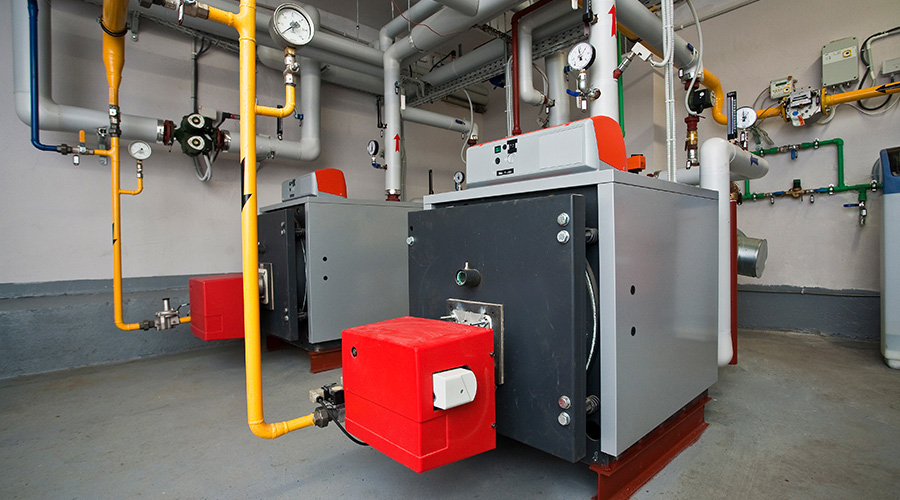Lessons on Acoustics
Maintenance strategies for minimizing noise in classrooms to create better learning environments
As the link between the indoor environment and occupant performance grows stronger, the issue of classroom acoustics in education facilities is attracting greater attention. The clarity of the spoken word is an important constituent of effective communication and, to a large extent, directly related to the acoustic environment.
For engineering and maintenance managers, understanding the elements of a good acoustic environment is an important step toward addressing acoustical issues that cause dissatisfaction and generate complaints.
Acoustic Environment
The effect of classroom acoustics on student comfort and productivity is a major concern. When students must strain to hear the teacher or lecturer, they can’t fully retain the information being presented and might disengage from the learning process. The most important factor in improving classroom acoustics is to assess the signal-to-noise ratio (SNR), which is the relationship between the sound-intensity levels produced by the lecturer and by background noise.
Background noise is common in classrooms and comes from ventilation systems, exterior activities intruding into classrooms, overhead projectors, and occupant activity. Reducing background noise goes a long way toward improving the SNR.
Aside from the SNR, the rate at which a classroom’s interior finishes reflect or absorb acoustic energy is called reverberation time. Reverberation time is high in rooms with multiple, hard, reflecting surfaces, and it is low in rooms with soft, sound-absorbing surfaces.
Common Acoustical Problems
Ventilation equipment noise. Noise from equipment is the greatest source of complaints in classrooms. When a classroom’s background noise is high, its SNR is low.
Managers need to consider strategies to control noise from all noise-generating equipment. Depending on the equipment and its location, noise can be: duct-borne as it travels out of diffusers and grilles; airborne as radiated noise through the ceiling into classrooms; or structure-borne when the equipment is hard-connected to an efficient radiating surface, such as gypsum walls. The most common source of mechanical-equipment noise in classrooms is air-terminal boxes in ceiling plenums.
Green schools often use natural ventilation, radiant heat, or a chilled slab floor. As a result, they rely less on mechanical equipment and lack built-in background noise found in more traditional buildings, therefore they yield a poor SNR.
Noise transmission through walls. Student noise in circulation spaces, sounds from the outdoors, amplified voices, and presentation noise in adjacent classrooms can bleed through classroom walls and distract users. This issue is a growing concern because modern classrooms are increasingly outfitted with built-in audiovisual and presentation systems that permit educators to integrate movies, films and internet clips into lessons. The associated sound from these systems creates new acoustical challenges that managers must address.
The level of audibility and intelligibility of intruding sounds is related to the architecture that separates classrooms from their surroundings, as well as the level of background noise available to mask intruding sounds. Having emphasized the need for a good SNR, managers should reduce background noise in classrooms to a reasonable level. They can reduce the impact of intruding sounds by improving a classroom’s architectural separation — for example, adding gypsum layers, full-height walls, and proper door seals.
Reverberation. Echoes and long sound-decay times are symptoms of bad room acoustics. They have a direct impact on speech intelligibility and arise from the absence or lack of sufficient sound absorptive material in classrooms.
Strategies to Reduce Noise
Managers can incorporate the following strategies into their facilities to improve the acoustic environment in classrooms.
Establish criteria. Some facilities have never established acoustics criteria, while others might have gone through the exercise on a past project. But once a building is complete, the ability to improve its acoustics is somewhat limited and costly. So it is important to establish design criteria from the start.
Two kinds of acoustical criteria exist — literature-based and experience-based.
Literature-based criteria refers to documents, such as: ASHRAE Sound and Vibration Control, Chapter 47; and ANSI S12.60-2002, Acoustical Performance Criteria, Design Requirements, and Guidelines for Schools. These documents suggest guidelines and criteria for controlling noise in facilities.
Developing experience-based criterion involves measuring noise levels in existing classrooms and determining whether the performance in those spaces is acceptable. Experience-based criteria typically are considered during the value-engineering phase of new projects or during a renovation.
Acousticians often will challenge all criteria to strike a balance that fits both the budget and owner expectations. As they try to educate and encourage owners and managers to implement criteria and guidelines for better acoustics, budgets often become an issue, and the tendency is to revert to the old design criteria. This situation often occurs because when budgets are established for schools, they are based on cost per square foot and fail to account for the expectation of improved acoustics in classrooms.
Reduce mechanical noise. To do so, managers might consider these common problems and suggestions to address them:
The terminal units located over the classrooms are noisy.
Technicians can investigate by turning units on and off to isolate the noise from a particular unit. Listen underneath the unit, close to the ceiling and the diffuser, to determine if the radiated noise comes from the unit through the ceiling or if the noise traveling out of the diffusers is the culprit.
If the diffuser is the dominant source of noise, technicians can relocate and connect it with a longer, sound-lined duct or flex duct, ensuring that the flex duct is free of kinks. If the terminal unit is the culprit, technicians can slow down the fan, use a larger terminal unit, or relocate the unit so it is over a non-sound sensitive location.
A hiss or whistle emanates from a diffuser or grille. The most likely cause here is air noise generated at the face of the diffuser or grille or at the volume damper. Remove the diffuser or grille, and listen to the change in the noise. Likewise, open and close the volume damper and listen to changes in the noise.
Technicians also should consider reducing the air volume to the room to reduce the airflow through the noise-generating element. Replace diffusers or grilles with larger models that can accommodate the same volume of air at lower velocities and noise.
Noise from a major ventilation component is entering a classroom.
Usually, this noise manifests itself as a low-frequency rumble caused by air turbulence, or as a roar caused by fan-blade passage frequency. Check the fan’s internal vibration isolation. Listen to the noise in other rooms served by the fan, and compare noise levels and character. Listen closely to the main ductwork traveling over the impacted space, and determine if the noise is breaking out of the duct walls or coming from diffusers.
Technicians need to ensure that fan isolators are not short-circuited when the fan is running. If the ductwork is bare sheet metal, consider lining it with a 1-inch thick liner. If the offending noise is breaking out of the ductwork walls, lag the ductwork with two layers of sheetrock on all four sides. Place a silencer in the duct near the noise’s source, but keep in mind that silencers add pressure to a system.
Managers also need to address the problem of noise transmission through the walls. The ability of a partition to reduce noise between two spaces is as good as the weakest link in the wall. The weak link can be a crack, back-to-back electrical boxes, air grille, door, or a continuous air plenum over a wall that connect two rooms acoustically.
Noise bleeds through classroom walls, causing disruption and complaints.
Technicians can investigate by placing a boom box on one side of the wall and find a non-broadcasting station that emits continuous noise, making sure the boom box is loud enough to be heard through the wall. Listen closely to the wall below and above the ceiling to identify noise leaks and flanking paths. Similarly, turn on the lights in one room and examine the wall from the dark room to identify leaks through lit gaps and cracks. Listen to transfer ducts above ceilings.
The solution might be to seal all cracks airtight with caulk. Similarly, seal wall cuts at duct, pipe, and conduit penetrations, as well as wall joints at structure. If sealing cracks is not sufficient, consider upgrading the wall construction.
When assessing strategies for improving classroom acoustics, managers should focus on minimizing background noise that typically arises from ventilation systems serving classrooms, minimizing noise entering classrooms from outside, and adding sound-absorbing material to the room. Following these guidelines will ensure better acoustical performance and student learning over the life of a building.
Basel H. Jurdy is a principal of Yantis Acoustical Design in Seattle.
Related Topics:











